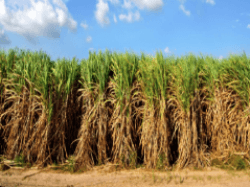Mar 21 2016
The U.S. is the largest oil consuming country in the world, exceeding all other nations across the globe. This fact highlights this unsustainable practice, and because of this Congress issued a new directive in 2007 to move from the limited petroleum-based oils to more sustainable sources.
 Oil cane field
Oil cane field
Plant-based oils are used to produce biodiesel. Soybean is a key dietary protein and is a major resource of plant-based oils. However, this crop can only produce a single barrel per acre, which means that it could never resolve the country’s demand for oil.
To deal with this problem, the Advanced Research Projects Agency-Energy (ARPA-E) program of the Department of Energy has proposed high-risk, high-reward projects, which could help to develop innovative drop-in fuels in the PETRO program.
Researchers from the University of Illinois took up this challenge and subsequently developed a new technology to produce huge volumes of oil from sugarcane. Their work highlights the cost-effective benefits of this novel technology compared with soybean oil.
We thought that if we could go back to the drawing board, we’d need a very productive crop. And we would also need something that could grow on land that isn’t being used intensively for food. We came up with sugarcane and sweet sorghum.
Stephen P. Long, Crop Scientist, University of Illinois
Under the guidance of University of Illinois scientists, a research team initially changed the metabolism of sugarcane to transform sugars into oils or lipids, which can then be used to produce biodiesel. The sugarcane usually contains 0.05% of oil. In less than a year of this project initiation, the researchers successfully increased the oil production 20 times, up to roughly 1%.
Currently the oil-cane plants generate 12% of oil, but the team aims to obtain 20%. The group has also introduced additional benefits to the oil cane plants which include more efficient photosynthesis and better cold tolerance. This will result in higher quantities of oil and higher biomass production.
If all of the energy that goes into producing sugar instead goes into oil, then you could get 17 to 20 barrels of oil per acre. A crop like this could be producing biodiesel at a very competitive price, and could represent a perpetual source of oil and a very significant offset to greenhouse gas emissions, as well.
Stephen P. Long, Crop Scientist, University of Illinois
During their study, the researchers considered the technology, land area, and the associated expenses needed to convert oil-cane biomass into a sustainable biodiesel within different oil production situations, from 2% oil in the plant to 20%. This data was evaluated against soybean and standard sugarcane, which can be used to produce ethanol. A major benefit provided by oil-cane plants is that the plant’s remaining sugars can be changed into ethanol, offering a dual sources of fuel in one.
Modern sugarcane mills in Brazil shared with us all of their information on energy inputs, costs, and machinery. Then we looked at the U.S. corn ethanol industry, and how they separated the corn oil. Everything we used is existing technology, so that gave us a lot of security on our estimates.
Stephen P. Long, Crop Scientist, University of Illinois
The study also revealed that if oil-cane plants that contain 20% of oil in the stem are cultivated on under-used acres in the southeastern region of the US, over two-thirds of the nation’s use of jet fuel and diesel can possibly be replaced.
Also, this level of productivity can be attained only by oil cane on just a small land area required for canola and soybean crops. Moreover, oil-cane plants can even be grown on unusable land, which is not possible with other types of crops. A much greater proportion could be supplied by soybean, even if the entire crop went into biodiesel production. In addition to this, oil cane could achieve this level of productivity on a smaller land area, and could do so on land that is considered unuseable for food crop production.
The existing cost of biodiesel production from soybean is $4.10 per gallon or $1.08/L. If oil cane is used, that cost can be reduced to $3.30 per gallon and $2.20 per gallon for 2% and 20% oil cane, respectively. This cost benefit could be further improved if the ethanol produced from 1%, 5% and 10% oil cane is added to it.
While $2.20 per gallon is not much of a saving in view of the present cost of gasoline in the U.S., Long urges politicians and consumers to consider the long-term effects of petroleum-based fuels.
We know from our past experience that it’s not going to last. We need to start building for a future when gas is no longer as low as $1.50 per gallon, and we need to avoid any future dependency on other countries for our oil. We are lucky to have the land resources to do this and, in doing so, to ensure that future generations have a supply of oil that is domestic and renewable.
Stephen P. Long, Crop Scientist, University of Illinois
The article titled, “Techno-economic analysis of biodiesel and ethanol co-production from lipid-producing sugarcane,” was published in Biofpr.
Haibo Huang, lead author and formerly of the U of I, is a professor at Virginia Tech. Co-author Vijay Singh and Stephen Long are faculty members in the College of Agricultural, Consumer, and Environmental Sciences at the U of I.
The Department of Energy’s ARPA-E program funded the study.